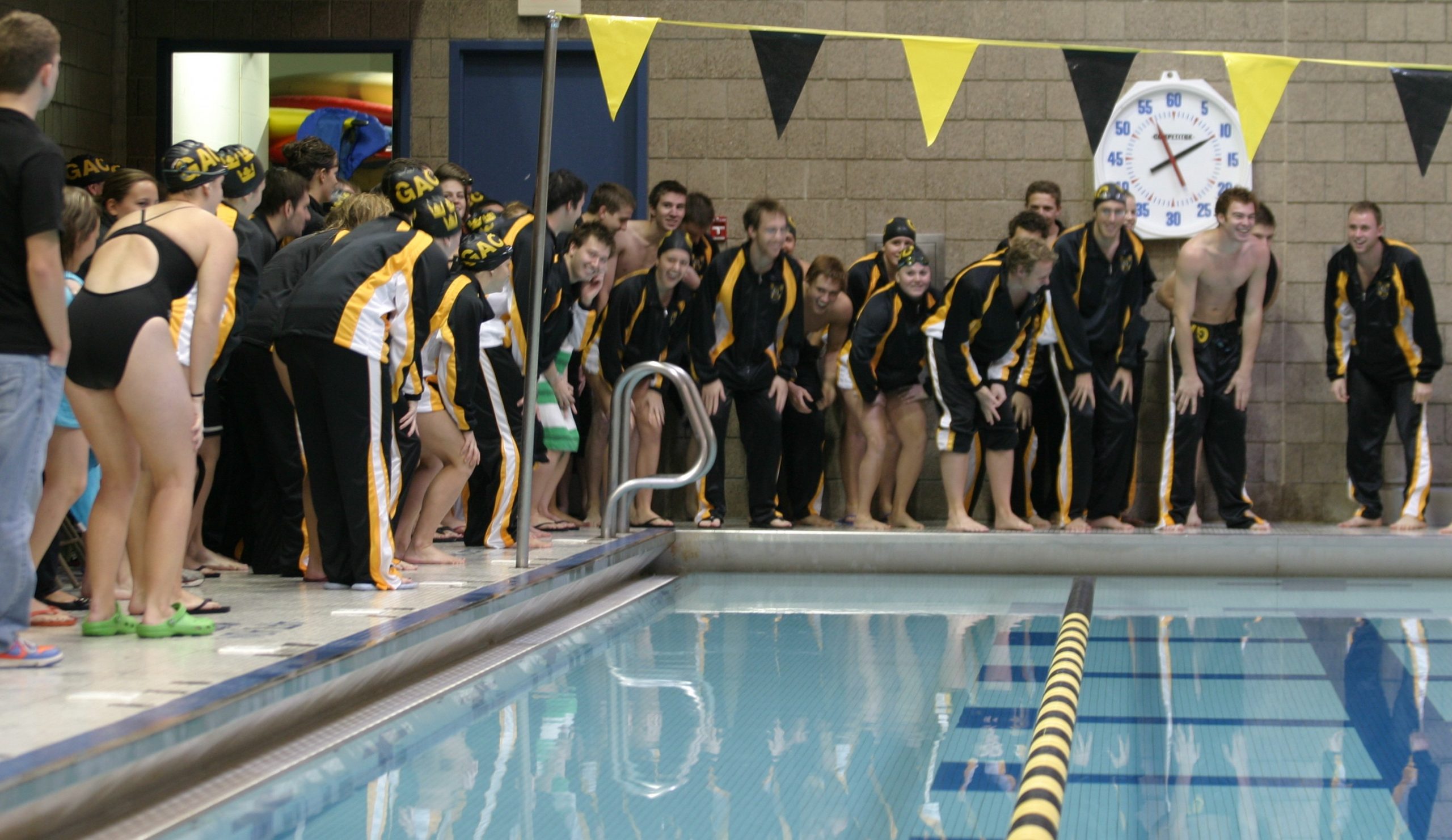Head Coach Jon Carlson said, “We put a big emphasis [on] being more than just a bunch of individuals swimming for our school … We want to be a team.”
This mantra has come to define the Gustavus Swimming and Diving program, which is one of the few athletic programs that combine men and women into one cohesive unit that trains, travels and competes together.
The Women’s team is fresh off one of its most successful seasons in recent memory, securing the MIAC Conference title in 2009-10 and placing eighth at nationals. A deep squad of swimmers rejuvenated with some fresh faces suggests that the women are poised for another successful season.
“The women will definitely make a run at the conference title again,” Carlson said. “[For] the [men], it’s going to be close between about four or five different teams. I think we have a ways to go on the [men’s] side.”
The men finished second in the MIAC conference last season behind St. Thomas, falling short only by a margin of eight points. The men are hungry for another opportunity and should be in the middle of the race by the end of the year if their national ranking of 22 is any indication.
The Men’s and Women’s teams started competition on Nov. 6 with a dual home meet against St. Cloud State. Although Gustavus lost on both the men’s and women’s sides, players and coaches were happy with the results against a solid Division II opponent.
“Although there were some standout swims, times didn’t play a huge factor,” Senior captain Wes Jones said. “Our main focus was getting back in the habit of racing and setting a precedent for the rest of the season.”
Winning and losing meets throughout the course of the swim season has little effect on the outcome of the season. “[In] a lot of other sports, you’ve got to be at your best every week,” Carlson said. “[In] swimming, you train for five months for [only] three days in February.”
Those three days in February mark the dates of the MIAC Conference Championship, and although it is the most important meet of the season, there are other events throughout the year to anticipate.
Gustavus will travel to rival St. Olaf on Nov. 13 for what is considered the most pivotal dual meet of the season.“People come out of nowhere and swim lights out at this meet, and it is those swims that make a difference,” Senior captain John Rice said.
St. Olaf has been a swimming rival of Gustavus for a decade or more, and alumni and fans look forward to this meet every year. “When it’s just us and Olaf, that whole pool area is ready to erupt,” Rice said.
Adrenaline and pride will allow swimmers to post competitive times this weekend, but it is important to keep the meet in perspective in order to focus on the end result, which is a conference championship.
“Coach Jon Carlson has a really good taper [program] that he has perfected over his 20 years here, and everybody swims fast at conference,” Senior captain Anika Erickson said.
Erickson has won conference in backstroke the past two years and understands the benefit of sticking to Carlson’s training program. “It is easier as a senior to trust the training, knowing it’s going to pay off,” Erickson said.
Will power and mental strength are essential for success in a sport where your body is demanded to perform each day, but the pulse of the fans and the cheers of teammates has its own motivational influence, at least momentarily.
“We take that pent up energy and all that Gustavus power that you have at that one moment and spread it out over three days,” Rice said. “I think if we can do that we’ll absolutely have a shot at winning [the conference].”
The reason for the profound team chemistry that the swim team has transcends common conventions. Completing a swim season is a matter of survival, which can only be accomplished with the help of those around you. The closeness of the team as a whole has led outsiders to make assumptions regarding the nature of the swim program.
“Some consider us a cult,” Jones said. “I’m still not sure what people in cults do. If it’s wearing Speedos and smelling like chlorine, then sure.”
The mental and physical rigors of a season forces swimmers to resort to basic primal instincts. The key to survival is to form a support system, Speedos included, because nobody can survive the season alone.
